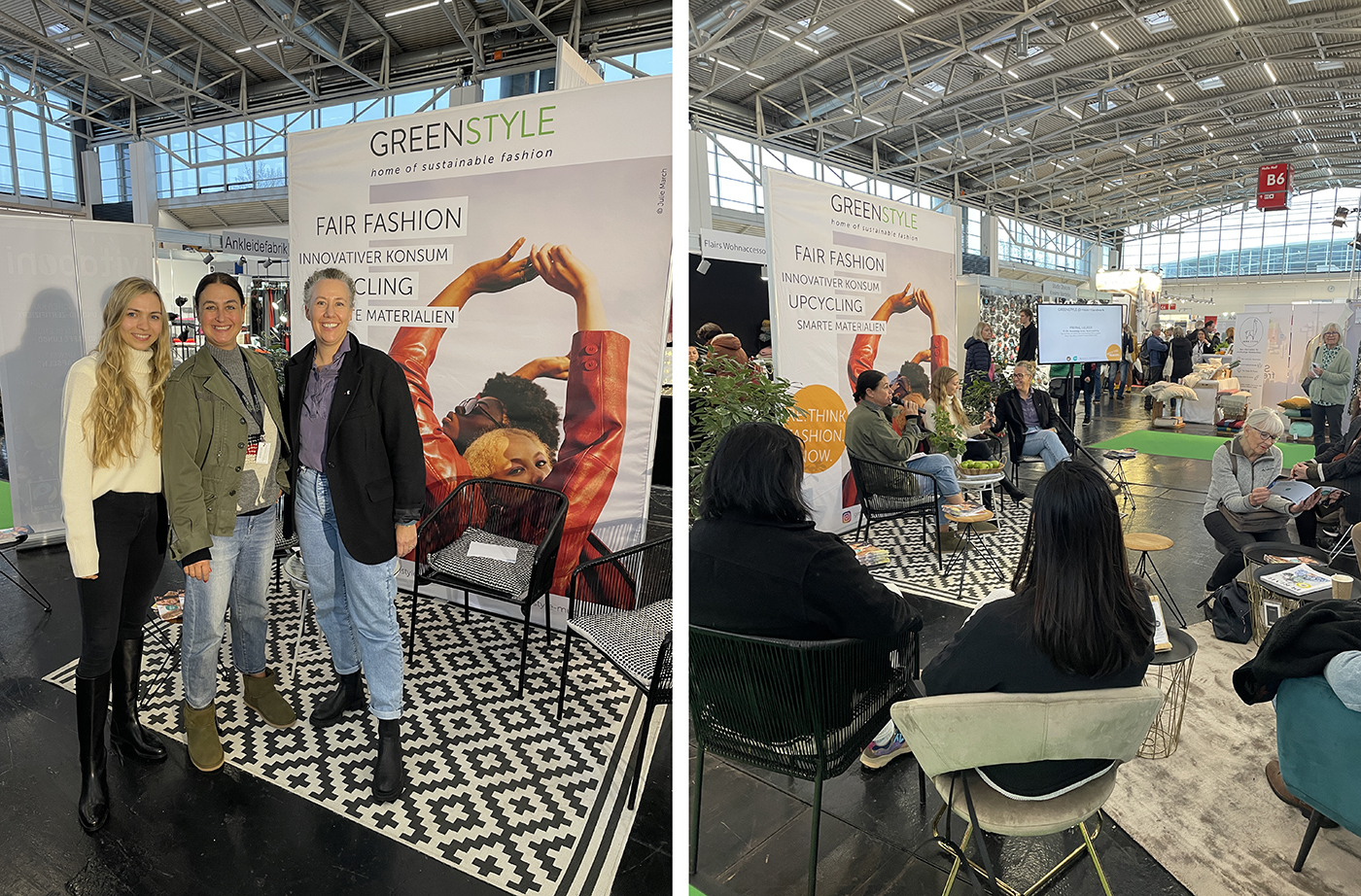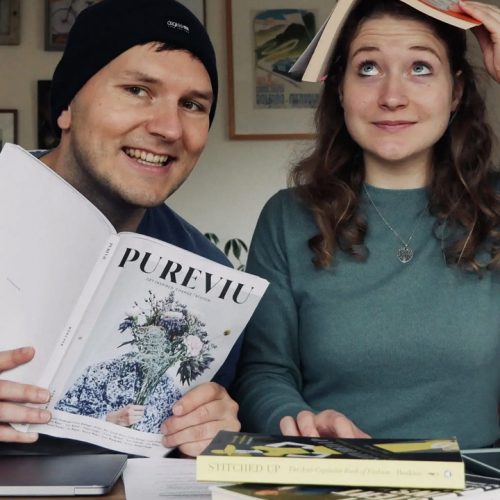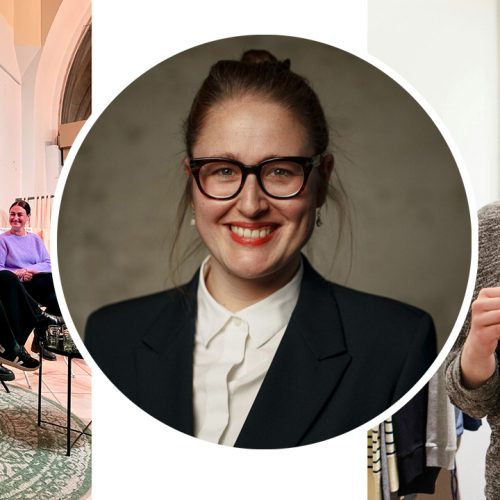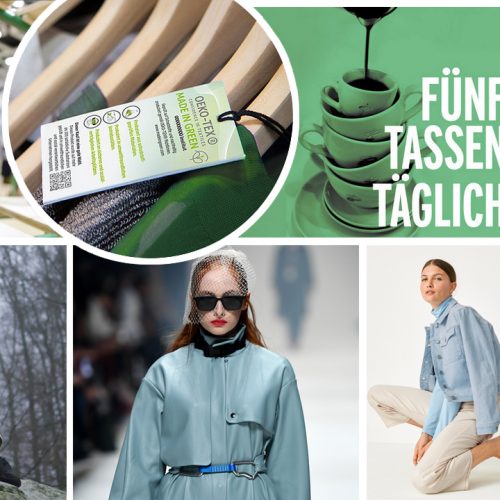Tips & tricks to avoid falling into the greenwashing trap.
It’s nice to see and incredibly important that the topic of sustainability has gained a certain relevance. Unfortunately, this has led to more and more companies using sustainability as a marketing strategy and giving their products a green image with so-called green claims. This did not go unnoticed. Here we are talking about greenwashing. Consumers must be given the right tools to be able to distinguish flimsy marketing strategies from serious sustainability. So that we don’t – or at least not so easily – fall for greenwashing, I spoke to two experts: Inga Bleyer and Carolin Franitza from OEKO-TEX®.
Mirjam Smend: Most of us have certainly come into contact with the name OEKO-TEX®. But to create an appropriate basis: Can you give us a brief overview and insight into the organization?Where do you come from, what do you do and where do you want to go with OEKO-TEX®?
Inga Bleyer: OEKO-TEX® has been around for over 30 years. OEKO-TEX® started with the mission to ban harmful chemicals from textiles. This mission remains anchored in our core values. The best known is our Standard 100, which was developed 30 years ago and is called that because it tested for 100 chemicals. Today we test for a list of more than 1000 chemicals in Standard 100. Every year, new scientific findings emerge about which chemicals can cause newly researched health damage.
Today we test for a list of more than 1000 chemicals in Standard 100.
Mirjam Smend: We’re talking about 1000 chemicals that come into contact with textiles?
Inga Bleyer: Many, many more chemicals are used in textile production. Some of them do not cause any harm to health. Others may cause reactions such as a skin rash. These chemicals are either banned or are being tested against limits. This is our core business. But we have evolved over the 30 years. In addition to pollutant testing, there are now a total of seven standards and certifications that we offer. We are globally positioned. We consist of 17 test institutes in 70 countries. It is very important that all standards test the same – in India as well as in Germany.
Mirjam Smend: We have now delved deep into the organization so quickly. What is your job at OEKO-TEX®?
Inga Bleyer: I have been working in marketing and communications for four years. An important topic for me, as well as for OEKO-TEX®, is consumer education. We believe that only informed consumers can make the right purchasing decisions.
Carolin Franitza: I am responsible for our stakeholder management. Our stakeholders are NGOs, other certification organizations, political organizations, all the organizations that also deal with the issue of sustainability in the textile and leather industry. I give specialist lectures at conferences and am in working groups on topics such as biodiversity and living wages in order to further advance the textile industry.
We believe that only informed consumers can make the right purchasing decisions.
Mirjam Smend: When it comes to sustainability, consumers will have to learn to differentiate between what is truly sustainable and what is just a campaign. How do you define “sustainable”?
Inga Bleyer: It is a very challenging problem that the term ‘sustainability’ is not defined. There is no standard for sustainability. One approach is the three-pillar model. This is about social, ecological and economic sustainability. In theory, these three elements are equal and are implemented simultaneously. However, we at OEKO-TEX® clearly see sustainability as a process. A process in which we as a standard organization, together with our partners, producers, brands and also clearly involve consumers. Sustainability consists of many small steps that follow each other. I believe that every step is an important commitment. And every step is a right and important step towards sustainability.
Sustainability is a process. Every step is a right and important step towards sustainability.
Mirjam Smend: I would like to talk about Made in Green. What does it mean for me as a consumer when I buy a product with the ‘Made in Green’ label?
Carolin Franitza: With Made in Green, we offer a traceable product label for all types of textiles and leather products that were produced in environmentally responsible and socially acceptable working conditions. Environmentally conscious means, for example, the safe use of chemicals or the reduction of greenhouse gas emissions or the use of renewable energies. Socially acceptable means that there is good protective equipment for the workers, that wages are adjusted, and that there are good working hours. The label also stands for product and consumer safety. So there is certainty that a product was made from materials that have been tested for harmful substances. Here it is checked whether carcinogenic dyes and pesticides used in cotton cultivation can be detected in the product. The fourth component is the issue of transparency and traceability. A very important keyword when it comes to sustainability. Here we provide information about where the product was manufactured, who produced it. You can see this clearly on a map on our website showing where the individual production sites for a product are located.

Mirjam Smend: Speaking of transparency. Why is it so important?
Carolin Franitza: Transparency is not so easy to create because the supply chain in the textile industry is very complex. Brands often don’t even know which supplier their products come from. You may still know the direct supplier. But which cotton farm the material comes from – that’s where things get difficult. And that’s where sustainability is headed. It’s about having more information. That you know under what working conditions and at what wages the product is manufactured.
Brands often don’t even know which supplier their products come from.
Mirjam Smend: I mentioned it at the beginning: There is an EU directive on the subject of green claims. What do you mean by green claims?
Carolin Franitza: Green claims refer to environmentally-related statements made by companies about their products or services. Companies use this to show how their products and services affect the climate and also advertise this. You often read plastic-free, CO2-neutral, climate-neutral. The topic is often associated with greenwashing due to non-transparent or false statements. There will soon be an EU directive on the subject – the EU’s Green Claims Directive, which is intended to create transparency and counteract precisely this topic of greenwashing. The consumer should be assured that the product that is described as more environmentally friendly actually is.
Mirjam Smend: What exactly does the term ‘guideline’ mean in this context? Don’t you have to stick to it? It’s not a law.
Carolin Franitz: This directive is still in development, but there is a strong tendency towards being put into practice. It must be verified that these requirements are met. There must be sanctions. A certification organization is also very helpful here to check whether the sustainability requirements are met.
Mirjam: Can legislation be used to develop an anti-greenwashing framework? Ideally, prevent greenwashing? Or what does it take?
Carolin Franitza: Laws and guidelines are very important to counteract greenwashing. But in the end they don’t solve the problem. Building an anti-greenwashing framework requires multiple components, multiple measures. On the one hand, the right legislation and sanctions against companies that do not comply with the legislation. But actors are also needed to check that these requirements are being met. Certifications can play a very important role here in distinguishing environmentally friendly products from less environmentally friendly products. The topic of verification is the crucial thing here.
Certifications can play a very important role here in distinguishing environmentally friendly products from less environmentally friendly products.
Mirjam Smend: How do you support brands? What do the first steps and possible solutions towards sustainability look like?
Inga Bleyer: We know that certifications are a huge challenge, especially for small and medium-sized companies (SMEs). In addition to the financial aspect, it also required manpower and the knowledge that must be available in complex processes on very specific topics. That’s why the topic of certification is not easy for SMEs. A number of projects have been launched to make access easier. OEKO-TEX® built the modular system for Standard 100 30 years ago. This means that products are only Standard 100 certified if every single component of the product has been tested and verified. In other words: Not just the main material, but every button, every label, every lining, every yarn. Only then can the standard 100 seal be on the final product. Companies can purchase pre-certified yarn and fabrics and thus save costs and effort. This is cheaper and less complicated than having an entire product tested and certified. That’s why the modular system is a good start for SMEs, so that they can then potentially get themselves certified in a later step. The certification can be built up step by step.
Mirjam Smend: Each of us has certainly fallen for greenwashing. What do you recommend to consumers? A few anti-greenwashing tips to go…
Carolin Franitza: My first tip would be to be skeptical about statements. 100 percent sustainable, completely sustainable – if the statements are too general or sound unrealistic, I would be careful. And there are seals and certifications that are intended to help recognize more sustainable products. Of course, there is abuse here too. Not every seal is a valid seal. OEKO-TEX®, for example, has a tool on the website where you can use the product ID found on the seal to check whether it is really a valid seal.
Mirjam Smend: However, there are 230 sustainability seals in the EU with very different levels of transparency. How do I orient myself as a consumer?
Inga Bleyer: Sustainability is so complex. But you can listen to yourself and see what is important to you. Are they natural materials? There are seals here. If I pay attention to social justice, then I first look for social seals such as Fair Wear or Fairtrade. Everyone has to decide for themselves what is important to them personally and then see what is best for them.
It is important that people do not lose the fun of fashion despite laws and regulations. We take care of the laws and regulations – then consumers can enjoy fashion with a clear conscience.
There are over 150 great fashion brands in our brand directory >>>







